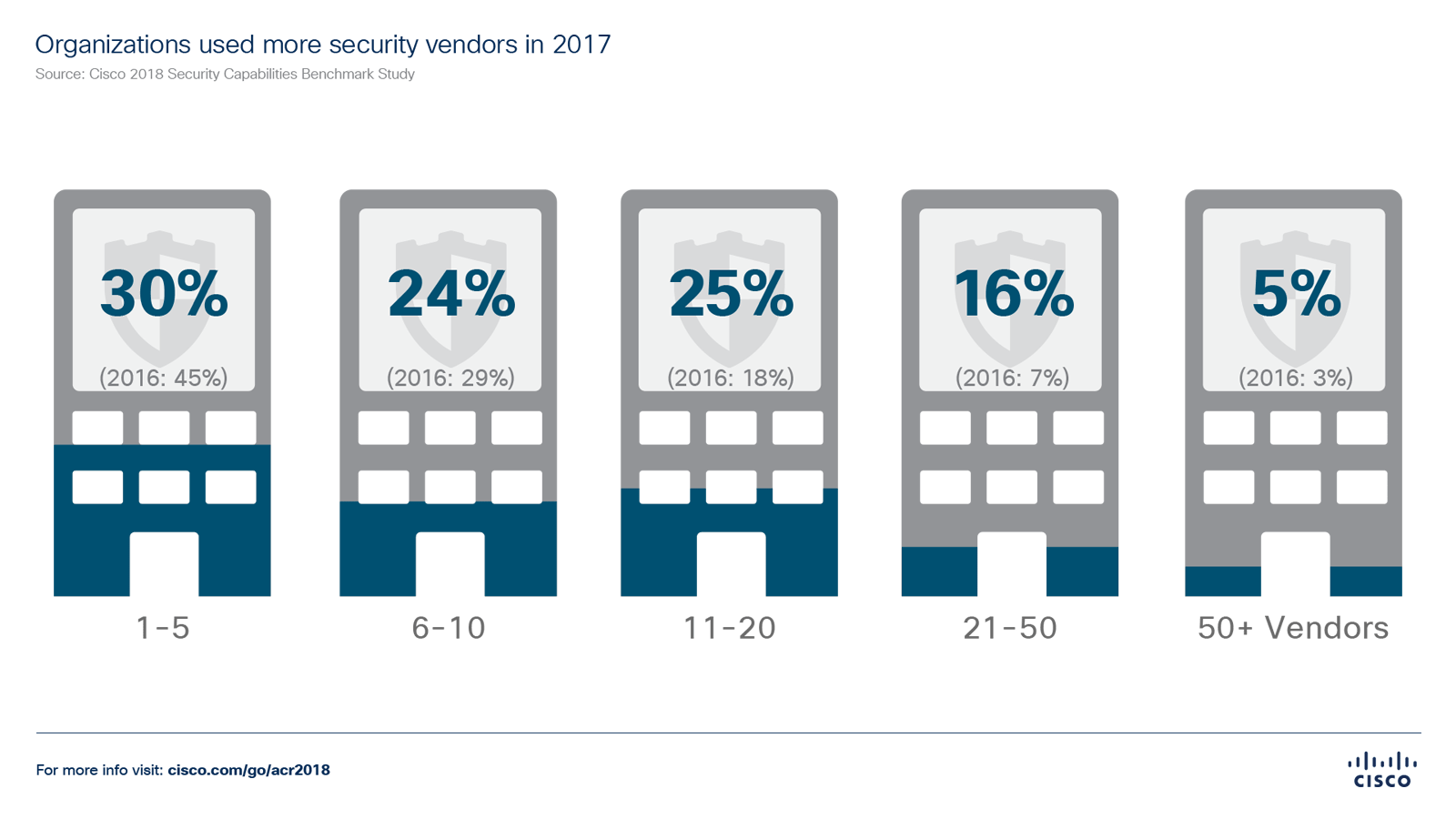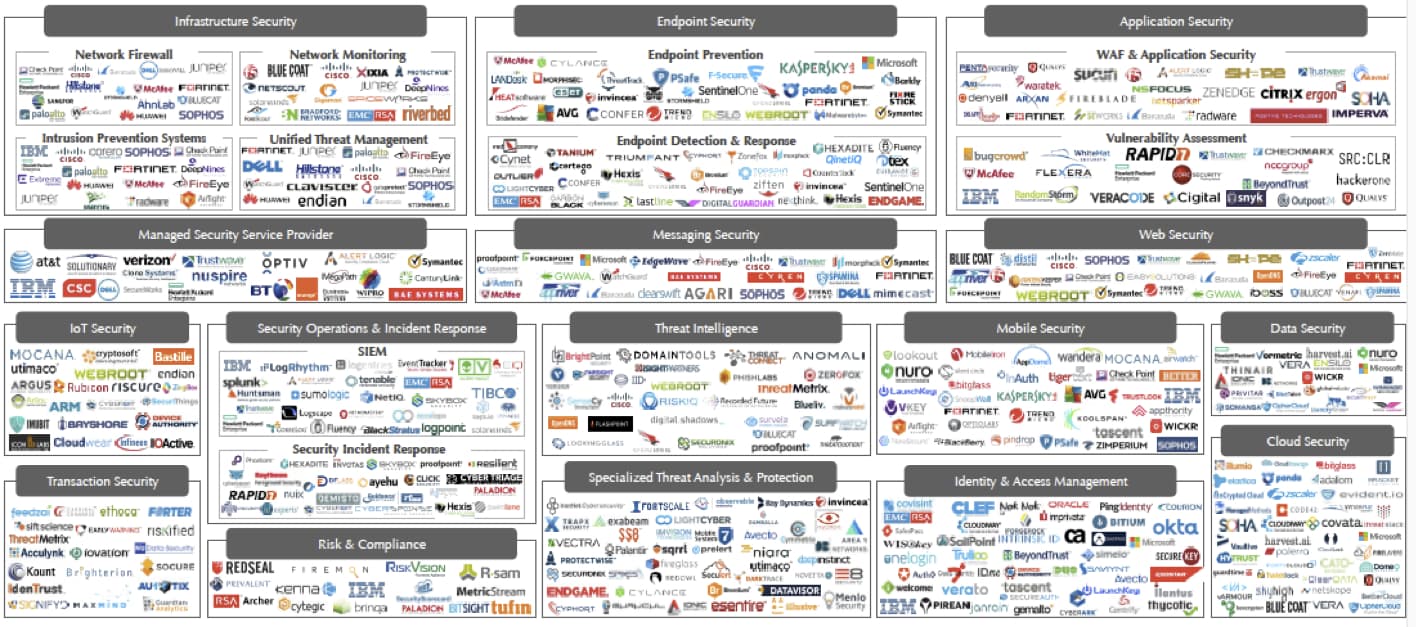A Multi-Vendor Security Environment Could Put You at Risk

One of the big challenges organizations face today is complexity, and security is no exception. According to the 2018 Cisco Annual Cybersecurity Report, in 2017, 25% of security professionals said they used products from 11 to 20 vendors, compared with 18% of security professionals in 2016. Also, in 2017, 16% said they use anywhere from 21 to 50 vendors, compared to 7% of respondents in 2016 (refer to figure below).
As the number of vendors increases, so does the challenge of orchestrating alerts from these many vendor solutions. The report continues to state that 54% of security professionals said that managing multiple vendor alerts is somewhat challenging, while 20% said it is very challenging.
So, what is the result of this complexity in vendors and point solutions? The report finds that:
- Nearly half of the security risk organizations face stems from having multiple security vendors and products.
- 80% of organizations using more than 50 vendors had to manage scrutiny from public breaches.
- In organizations with more than 50 security vendors, 81% experienced losses of at least US$1 million—with 29% seeing losses of US$10 million or more.
And in a security vendor landscape that looks a lot like this…
What’s an organization to do?
Simply eliminating vendors is not the only solution to reducing risk. Choosing vendors strategically—and with an eye toward integration rather than simply appending boxes to endpoints—can help defenders to focus on the risks that matter most.
This might just be the perfect time for you to start addressing the need to simplify your network security and invest in more proactive, intelligent solutions that take a more immersive and comprehensive approach. At OneNeck, we’re here to help. Our security assessments, built on industry-based frameworks, can help you assess your gaps and ensure those disparate point solutions aren’t leaving you vulnerable.
Additional Resources:






